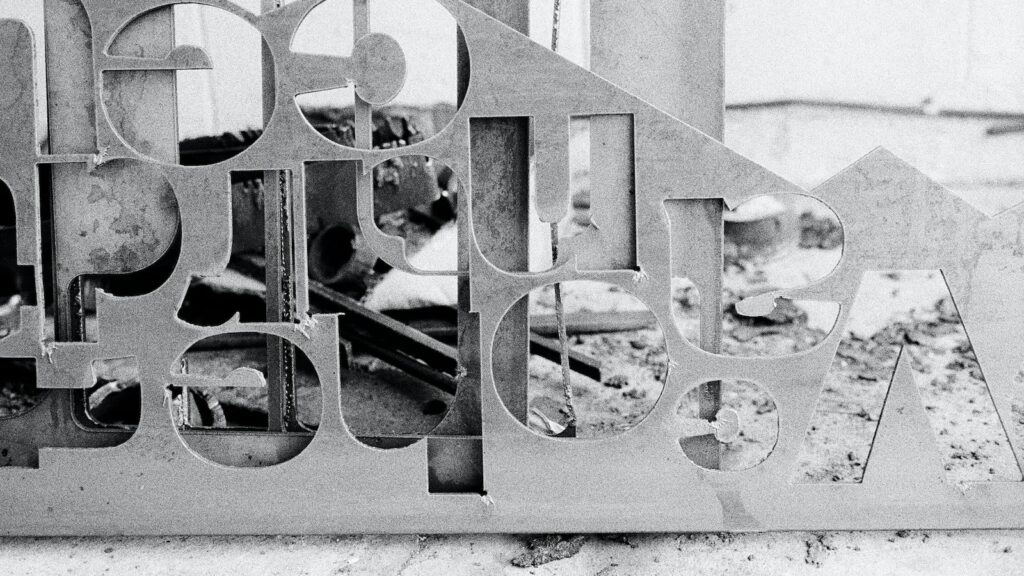Title: From Scrap to Treasure: The Lifecycle of Cars After Removal
Introduction:
In today’s rapidly progressing society, the automobile industry plays a pivotal role in shaping our daily lives. With technological advancements leading to more efficient and sustainable modes of transportation, the lifecycle of cars has become an increasingly important topic. Once vehicles reach the end of their roadworthy lifespan, they often end up deemed as “scrap” or “junk.” However, what many may perceive as mere waste can actually be transformed into a treasure trove of valuable resources through the process of car removal and recycling.
This article delves into the intricate journey that discarded cars undertake, shedding light on the various stages and methods involved in their transformation from scrap to valuable assets. By exploring the detailed lifecycle of these once-loved vehicles, we seek to unveil the economic, environmental, and social impact of responsible car disposal and recycling practices.
As a renowned figure in the automotive industry, Top Cash For Cars is committed to promoting sustainability and environmental consciousness. Through our extensive industry experience, we have witnessed firsthand the tremendous potential locked within seemingly worthless automobiles. By providing an informative account of the lifecycle of cars after removal, this article aims to guide both industry professionals and concerned individuals towards making informed decisions regarding end-of-life vehicles.
From the initial removal of cars from active use to their meticulous disassembly, we will delve into the step-by-step process of extracting valuable components and materials. We will also shed light on the environmentally-friendly techniques employed in recycling and reusing automobile parts, which subsequently helps conserve valuable resources and reduces the burden on our planet.
Furthermore, this article will delve into the economic benefits experienced by consumers, as well as the environmental advantages derived from practicing responsible car disposal. By empowering readers with a comprehensive understanding of the lifecycle of cars after removal, we strive to foster a sense of ownership and responsibility towards the sustainable management of end-of-life vehicles.
Ultimately, our objective is to equip readers with the knowledge necessary to embrace the potential presented by each car’s end-of-life stage. By embracing the transformation of scrap into valuable resources, we can collectively contribute to a greener and more resource-efficient future for the automotive industry.
Join us as we embark on an enlightening journey through the intriguing lifecycle of cars after removal, showcasing the remarkable transformation from scrap to treasure.
Table of Contents
- The Lifecycle of Cars After Removal: A Comprehensive Overview
- Examining the Environmental Impact of Scrap Car Disposal
- From Salvage Yards to Recycling Facilities: Unveiling the Journey of Scrap Cars
- Recommendations for Efficient and Sustainable Management of End-of-Life Vehicles
- Final Thoughts

The Lifecycle of Cars After Removal: A Comprehensive Overview
The lifecycle of cars after removal is a fascinating journey that involves various stages, from being considered as scrap to being transformed into valuable treasures. Once a car is removed from its original owner, it embarks on a remarkable journey of renewal and repurposing. This comprehensive overview delves into the intricacies of this lifecycle, shedding light on the transformative process that these vehicles undergo.
Firstly, after removal, cars are carefully assessed for salvageable parts. Skilled technicians examine every nook and cranny, salvaging components that can be reused or recycled. This process not only contributes to reducing waste but also provides a sustainable source of materials for the automotive industry. Valuable parts such as engines, transmissions, and headlights are meticulously removed, inspected, and refurbished for resale or use in other vehicles. Any recyclable components, such as metals and plastics, are sorted and sent to specialized facilities for processing.
Following the salvaging of reusable parts, the remaining carcass of the car enters the realm of recycling. The dismantled body is crushed into smaller pieces, allowing for easier processing. These crushed remains are then separated by metal type and sent to smelting facilities, where they are melted down and transformed into new metal products. This recycling process greatly reduces the demand for raw materials, minimizing the environmental impact of producing new metals. Additionally, the plastics obtained from the vehicles are similarly recycled, contributing to the creation of new plastic products and reducing the reliance on fossil fuel-based plastics.
In conclusion, the lifecycle of cars after their removal is a remarkable journey of transformation and resourcefulness. Through salvaging and recycling, these vehicles find new purpose in their parts and materials, while also minimizing waste and preserving valuable resources. The automotive industry’s commitment to environmental sustainability continues to drive innovative approaches to the repurposing of cars, ensuring that each vehicle contributes to a greener, more efficient future.
Examining the Environmental Impact of Scrap Car Disposal
Scrap car disposal goes far beyond simply removing a vehicle from the road. The environmental impact of this process must be carefully examined to understand the true consequences of end-of-life car disposal. From dismantling to recycling, the lifecycle of cars after removal involves complex procedures aimed at minimizing the ecological harms associated with this industry.
First and foremost, the dismantling phase plays a crucial role in minimizing the negative environmental effects of scrap car disposal. Skilled technicians carefully disassemble the vehicle, removing hazardous materials such as batteries, fluids, and mercury switches. This ensures that these toxic substances are safely disposed of or recycled, thereby preventing them from entering the ecosystem. Additionally, during this phase, reusable parts are salvaged and sold, extending the lifespan of components and reducing the demand for new ones, which in turn reduces the need for mining and manufacturing activities, both of which have their own environmental impacts.
Once the dismantling is complete, the recycling process takes center stage. Car recycling involves shredding the remaining vehicle into smaller pieces, which are then separated into different materials like steel, aluminum, plastic, and rubber. These materials are subsequently sent to specialized recycling facilities where they undergo further processing. This advanced recycling process not only recovers valuable resources but also helps reduce the environmental burden associated with mining virgin materials. Recycling steel, for example, saves energy and reduces greenhouse gas emissions by about 74% compared to producing new steel. Moreover, proper disposal of hazardous materials and the recycling of valuable resources contribute to a circular economy, promoting sustainability and minimizing waste.
In conclusion, the lifecycle of cars after removal is a complex process that involves careful dismantling and advanced recycling techniques. By safely disposing of hazardous materials, salvaging reusable parts, and recycling valuable resources, the environmental impact of scrap car disposal can be minimized. These practices not only contribute to the reduction of greenhouse gas emissions but also to the conservation of natural resources, ultimately leading us towards a more sustainable future.
From Salvage Yards to Recycling Facilities: Unveiling the Journey of Scrap Cars
Once a car has reached the end of its useful life, it embarks on a fascinating journey that takes it from salvage yards to recycling facilities, ensuring that every part is repurposed or recycled. The process begins with the removal of the vehicle, where it is transported to a salvage yard for assessment and dismantling.
At the salvage yard, skilled technicians meticulously examine the car to determine its potential for reuse. Functional components such as engines, transmissions, and electrical systems are carefully removed and refurbished, ready to be sold as high-quality used parts. The salvaged materials are then sorted and classified. Steel, the most abundant material in a car, is extracted and sent to recycling facilities for melting and repurposing in various industries. Other materials like plastics, glass, and non-ferrous metals are also carefully separated and recycled so that they can be transformed into new products, promoting a sustainable circular economy.

Recommendations for Efficient and Sustainable Management of End-of-Life Vehicles
Efficient and sustainable management of end-of-life vehicles is crucial for minimizing negative environmental impacts and maximizing resource recovery. To achieve this, it is essential to implement effective strategies throughout the lifecycle of cars after removal. Here are a few recommendations for achieving efficient and sustainable management:
Sustainable Disassembly:
- Whenever feasible, end-of-life vehicles should be disassembled in environmentally controlled facilities equipped with specialized technology and equipment.
- Prioritize the collection and recovery of hazardous materials, such as batteries, airbags, and refrigerants, to prevent their release into the environment.
- Maximize the recycling potential by sorting components into various material streams, allowing for easier processing and recovery of valuable resources.
- Implement proper waste management practices for non-recyclable materials, such as the use of waste-to-energy technologies.
Promote Resource Recovery:
- Encourage the development and adoption of innovative technologies for the recovery and recycling of materials from end-of-life vehicles, such as advanced shredding and sorting techniques.
- Facilitate partnerships between automobile manufacturers, recycling industries, and research institutions to enhance the efficiency and effectiveness of resource recovery processes.
- Improve public awareness and participation in recycling programs to increase the collection rate of end-of-life vehicles.
- Develop and enforce regulations to ensure proper disposal of non-recyclable materials and prevent illegal dismantling or exporting of vehicles.
Final Thoughts
In conclusion, understanding the lifecycle of cars after removal sheds light on the immense potential they possess even beyond their glory days on the road. From being meticulously dismantled for valuable components to their eco-conscious recycling, every step plays a vital role in transforming scrap cars into treasures, both for the environment and the automotive industry.
At Top Cash For Cars, we recognize the value that these discarded vehicles hold. As a leading name in the industry, we are committed to providing our customers with competitive prices for their unwanted cars, regardless of their condition. We specialize in simplifying the removal process, ensuring a seamless experience for our clients while adhering to environmentally friendly practices.
If you have a car that is ready to retire and wish to make the most out of it, we encourage you to take the first step by requesting a quote. You can conveniently fill out our “Request a Quote” form on our website, or if you prefer a more direct approach, feel free to call us directly. Our team of experts is standing by to assist you and facilitate the best deal possible.
Remember, every scrap car has the potential to be a treasure once again. Let Top Cash For Cars be your reliable partner in transforming the lifecycle of your car and embracing the possibilities that lie beyond its final journey on the road. Transform your scrap into cash today!
